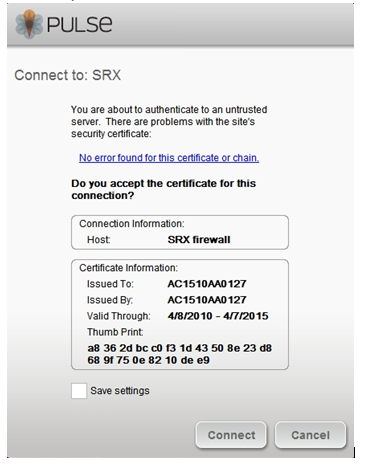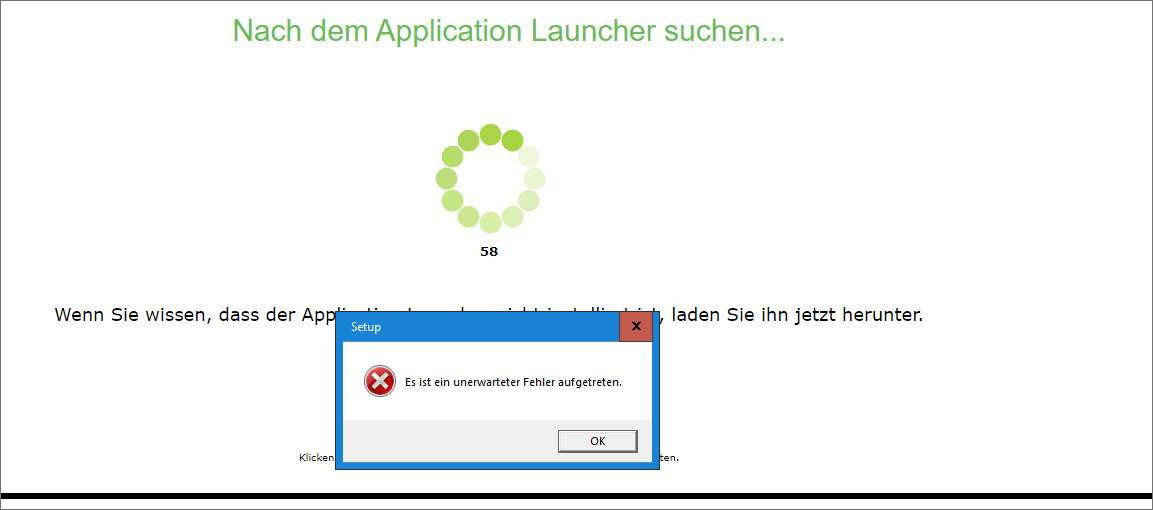

- PULSE SECURE CLIENT THERE ARE PROBLEMS WITH CERTIFICATE HOW TO
- PULSE SECURE CLIENT THERE ARE PROBLEMS WITH CERTIFICATE INSTALL
- PULSE SECURE CLIENT THERE ARE PROBLEMS WITH CERTIFICATE SERIAL
- PULSE SECURE CLIENT THERE ARE PROBLEMS WITH CERTIFICATE PASSWORD
We will find the generated CSR under Certificate Signing Requests and will be present as a Pending CSR. The certificate request contains a 1 way hash of the key, so the private key is never exposed to the outside world. The private key is stored inside the PCS. The PCS will now generate a request in a base64 format.Note: Be sure to confirm the key length of the certificate before clicking generate the 2048 bit option should be enabled, as indicated in the image below: Type the details of the certificate that you wish to generate from the IVE and then click Create CSR:.At the bottom of this page, click New CSR:.Go to Configuration > Certificates > Device Certificates:.At the bottom of this page, click the New CSR button click and provide the requested information.Importing it from System > Configuration > Certificate > Device Certificate > Import Certificate and key.Importing it from Maintenance > Import / Export > Configuration (System Configuration).Importing the previous device certificate from the system configuration backup:.The certificate and private key are separate files.The certificate file includes the private keys.Generating a certificate without a CSR:.This self signed certificate is capable of encrypting the traffic to and from the PCS however, as this is self signed, it recommended to use this certificate a production environment.Ī production certificate can be created in two ways: CSR (cannot be exported outside of PCSs) or by importing a certificate that contains both a public and private key.
PULSE SECURE CLIENT THERE ARE PROBLEMS WITH CERTIFICATE SERIAL
And use sun java.- Open jdk has old known problems with juniper vpn.The Pulse Connect Secure Access gateway (PCS) has a self signed certificate, which is created during the serial console setup of the Pulse Connect Secure Access gateway. In another window check if VPN interface is active:Īnd if so – You are on VPN!.Run the script, it will prompt for the AD password.Create script to get DCID value from webappsstore.sqlite and launch ncui (replace ):ĭsid1=`~/bin/sqlite3 ~/.mozilla/firefox/*.default/webappsstore.sqlite Create Greasemonkey js script (replace ) to dump DSID to webappsstore.sqlite file:Ĭat > ~/Greasemonkey/ File -> Open File -> Choose “”, and enable the script in the pop up window.
PULSE SECURE CLIENT THERE ARE PROBLEMS WITH CERTIFICATE INSTALL
Install Greasemonkey plugin and make sure its enabled. So had to use Greasemonkey plugin for firefox to capture DSID and save to HTML5 storage. Problem with DSID cookie – its Session Level, so it does not persist on disk, where you can grep it from.
PULSE SECURE CLIENT THERE ARE PROBLEMS WITH CERTIFICATE HOW TO
Scott has GREAT blog on how to make it work:
PULSE SECURE CLIENT THERE ARE PROBLEMS WITH CERTIFICATE PASSWORD
If on login you only asked user name and password (either AD password or SecurID), you lucky and you can easy launch “Network Connect” as described in several sources, for example: īut if your VPN server use two phase auth scheme (SecurID + AD password), it can get more involved. So you can still lunch “Network Connect” client, separately from your web session. Good news are: old Juniper “Network Connect” client is compatible with Junos Pulse and can be used on Linux client. In fact that client does not exists for Linux. In my case when I login to Juniper SSL web interface it run host-checker and as Linux is not supported the web form does not have way to launch Junos Pulse SSL VPN client.




 0 kommentar(er)
0 kommentar(er)
